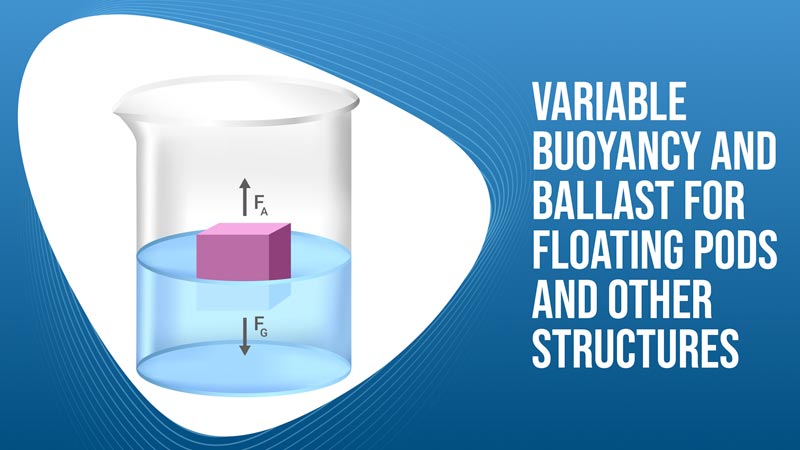
One of the challenges with building a floating home is the need for variable buoyancy and adjustable ballast. On boats and ships, this process is fairly simple since it is basically just a matter of making the boat sit at the right level in the water. However, with a home, especially one sitting on a TriPod base, we have to make all three outriggers work together to keep the home not only sitting at the right height in the water but also everything must be balanced.
If you want to land a small helicopter on one of your outriggers, we will need to decrease the buoyancy of that arm so that everything will stay balanced when the weight of the helicopter is there. The same concept applies if you want to have a gathering of people in your Wazebo. We will need to compensate for the extra weight. Or if you have more weight than usual in your SeaPod, we will need to increase buoyancy to keep things floating at the right levels.
There are three main solutions that we are thinking about and considering for our application on our floating homes. The first is ballast water tanks. These tanks are made of fiberglass and are inserted into the ends of the three outriggers on our TriPod model. These water tanks will have a pump that can either pump water in to make it heavier or pump water out of the tank to make it lighter and float higher in the water. This will be an automated system and will allow the SeaPod to regulate not only the height in which it is floating but also make adjustments to each tank to keep things level.
Another option that we have is to use airbags to add buoyancy. Airbags would allow us to do a few different things. Firstly, we can put them in the structure so that we can inflate or deflate them to raise or lower buoyancy in the water. Another thing that we could do is to use them as a failsafe in our outriggers. Each outrigger is basically a big metal tube that is sealed and watertight. Since the outriggers are full of air, they add buoyancy to the entire structure. If we use airbags inside of the outriggers, then it will allow us to compartmentalize the air within the structure. For example, if the steel of the outrigger should fail and start to leak, without airbags it could fill entirely with water. By using airbags inside of the outrigger we will add a backup to make sure that in case of an emergency, the outrigger stays buoyant until repairs can be made.
The third solution is what we call a buoyancy bucket. This is simply a bucket filled with heavy and dense materials several meters below the floating structure. While the bucket itself is not variable or adjustable, we could add an upside-down bucket below it which could be filled with air when we need to raise the buoyancy. It would act similarly to a ballast tank where when you replace the air with water, it gets heavier. When you replace the water with air, it gets lighter and floats a little higher.
As we move forward in the development process, we are doing calculations and tests to determine the most effective and most importantly, the safest option for maintaining proper buoyancy and balance. Down the road, this technology can be applied to many different kinds of floating structures across various industries so we are excited to keep working on finding the best solutions available.














